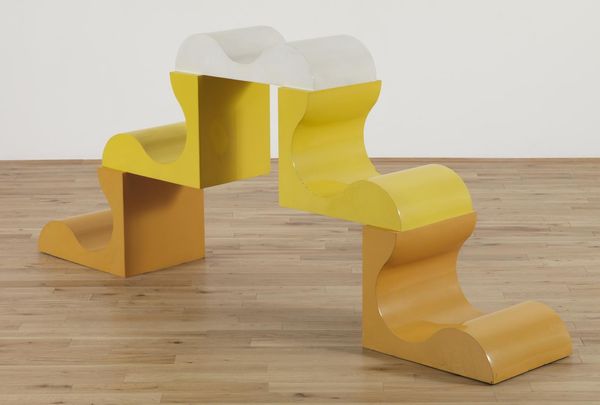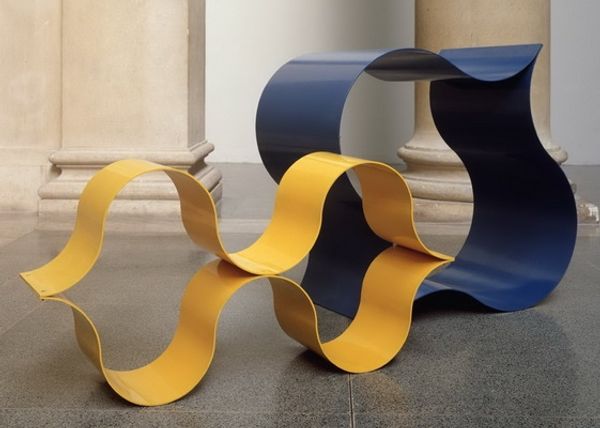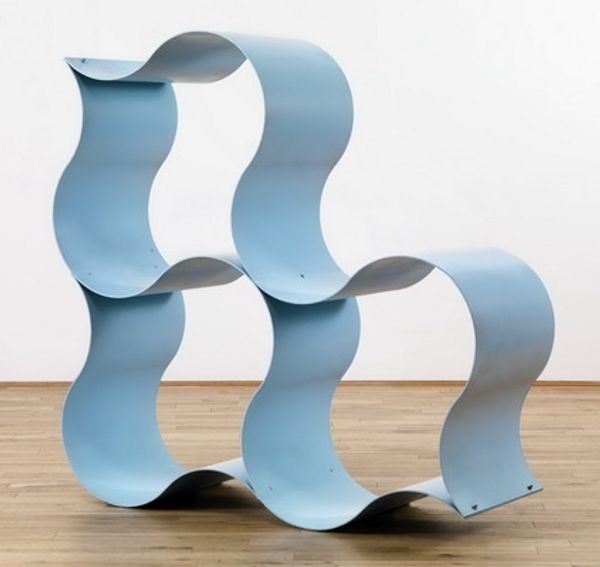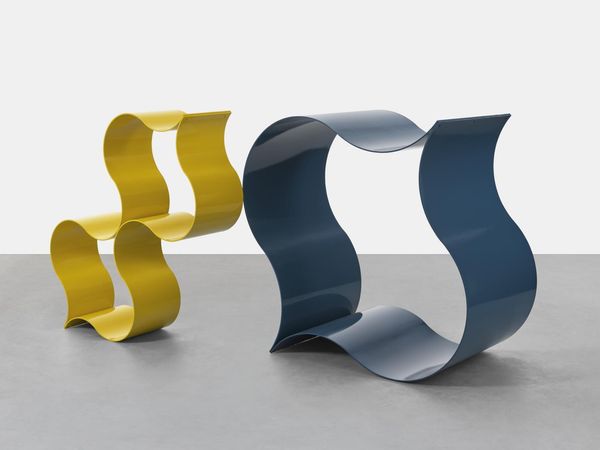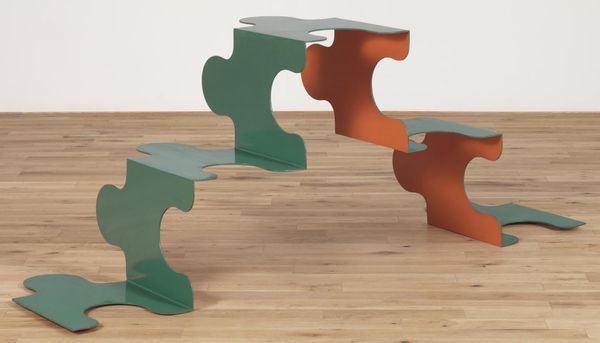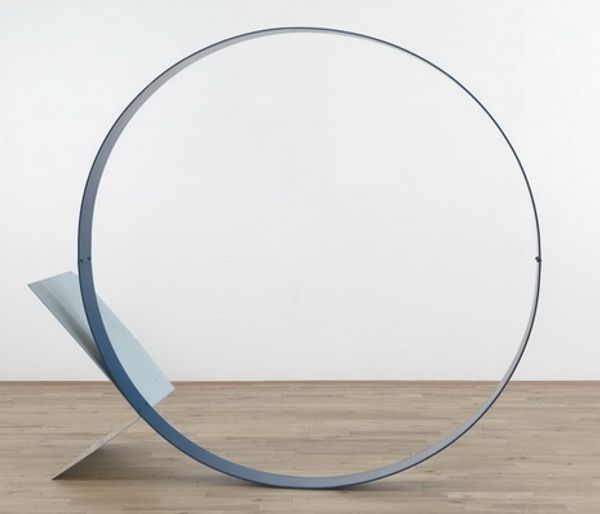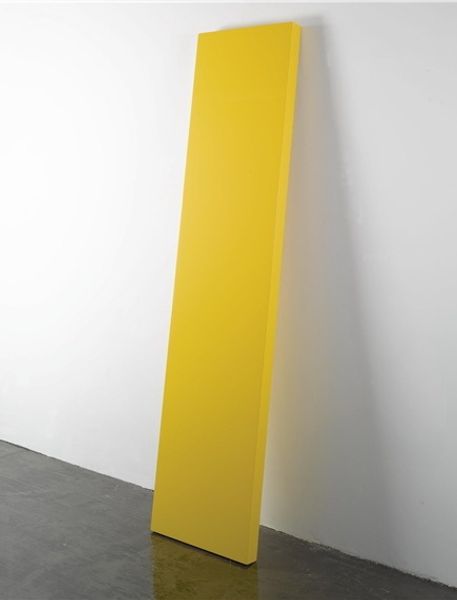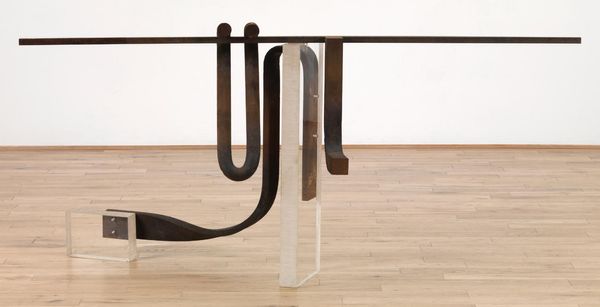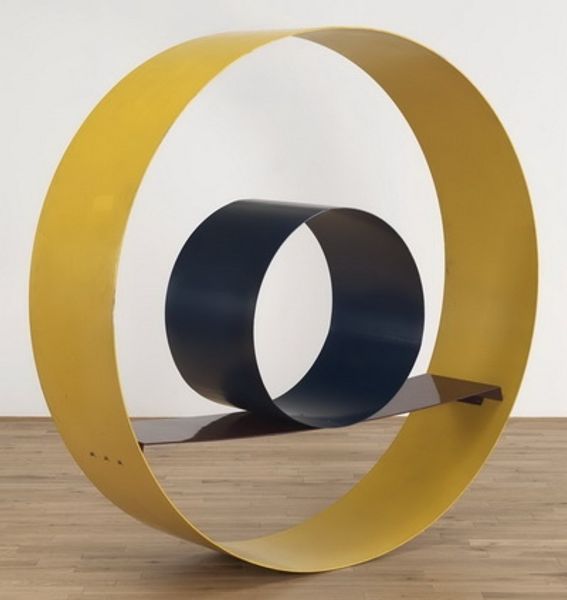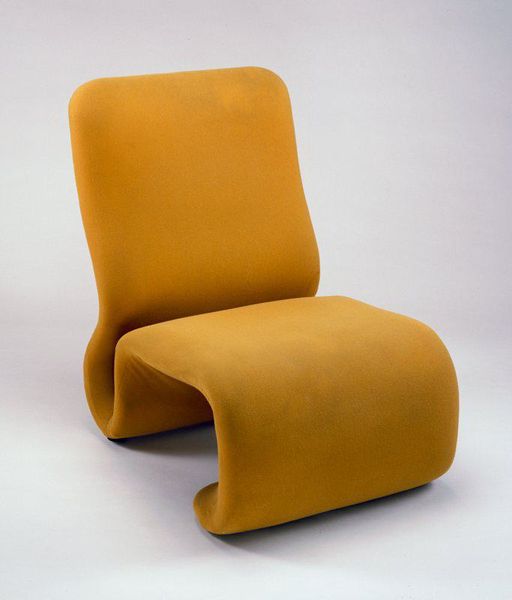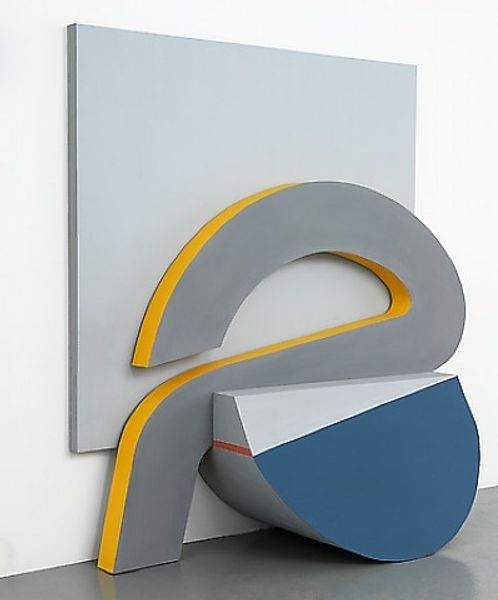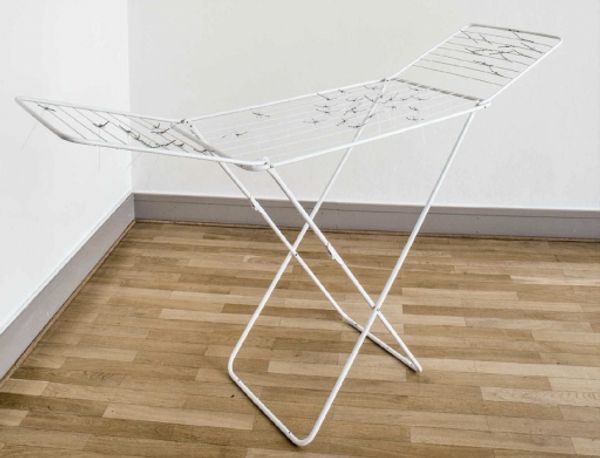
metal, sculpture
#
abstract-expressionism
#
kinetic-art
#
minimalism
#
metal
#
geometric
#
sculpture
#
modernism
#
hard-edge-painting
Copyright: David Annesley,Fair Use
Editor: Here we have David Annesley’s sculpture, *Orinoco*, created in 1965. It’s crafted from painted metal and really stands out with its bright yellow color and ribbon-like shape. It feels so playful and modern. What can you tell me about it? Curator: Considering *Orinoco* through a materialist lens requires we focus on the metal itself. Note how Annesley takes an industrial material and, through processes of bending and welding, transforms it into something that appears almost weightless and organic. What does this elevation of an everyday material say about art’s relationship to labor and production during this period? Editor: That’s a great point! It's interesting how he uses industrial processes, but the final product feels so… streamlined and elegant, rather than clunky. Curator: Exactly. The bright yellow paint, applied meticulously, further distances the piece from its origins. Consider how the use of color affects our perception of the material. Does it celebrate the industrial origin, or disguise it under a sheen of consumer appeal? Editor: It’s like he’s acknowledging the industrial world while trying to transcend it through form and color. But wouldn't you agree that its smooth surfaces and color hide the history and labor of the process, which contradicts a materialist reading of art? Curator: Precisely. And the very placement of such a piece within the white walls of this gallery setting impacts our perception. Do we consider the working-class origins of the material and processes of making when installed at the Tate Modern? Annesley’s sculpture opens a rich discourse about how art manipulates and recontextualizes everyday material experiences. Editor: This really makes you consider how materials and their manipulation contribute to an artwork’s meaning. I’ll definitely be looking at sculptures differently from now on! Curator: Absolutely. By thinking about the materiality, production, and reception of pieces such as this, we expose a powerful narrative of artistic consumption.
Comments
No comments
Be the first to comment and join the conversation on the ultimate creative platform.
